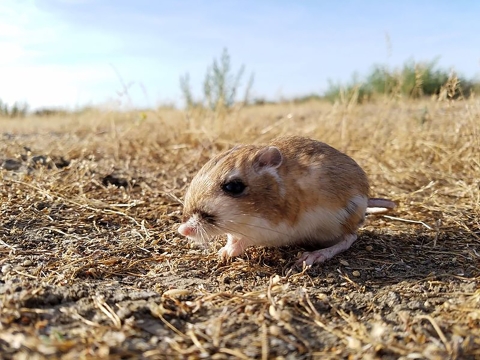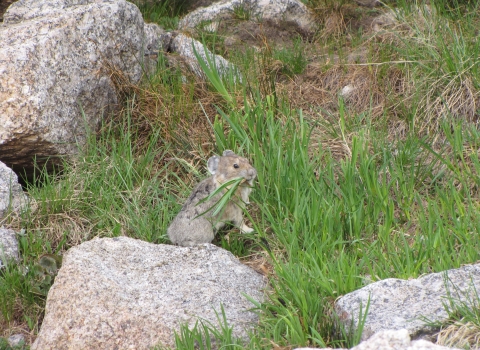In 2016, for the first time in over 20 years, U.S. Fish and Wildlife Service staff saw a significant increase in the number the endangered Tipton kangaroo rats on the Kern National Wildlife Refuge.
Now according to surveys, 2017 was another record year for the tiny endangered species with a total of 55 (trapped), passing the previous year record of 47.
“Kern National Wildlife Refuge has some areas of high-quality habitat for the Tipton kangaroo rat,” said Geoff Grisdale, wildlife biologist at Kern National Wildlife Refuge Complex. “We are happy our management is contributing to the protection of this species.”
Tipton kangaroo rat is a subspecies of the San Joaquin kangaroo rat. They are desert-adapted species and prefer open habitats with a little shrub cover.
Over the past few decades, the rats have experienced significant habitat loss in the valley, due to heavy ground cover from non-native grasses and flooding.
The Tipton kangaroo rat has been protected under the Endangered Species Act since 1988.
Despite several large-scale trapping efforts in 2005 and 2007, only five rats had been documented from 1994 until the fall of 2015.
“With those numbers, we were afraid the Tipton kangaroo rats might be in danger of being eliminated from the refuge,” said Grisdale.
To attract more Tipton kangaroo rats to the refuge, Kern employees manage 2,600 acres of upland habitat specifically for them. Cattle graze the area to reduce cover, making conditions just right for the endangered species.
By 2015, the refuge staff was ready to see if their management practices were working and if Tipton kangaroo rats were still present on the refuge. Staff conducted live-trapping in 16 locations on the refuge that were prime habitat for the kangaroo rat.
The results were positive. From October 2015 to April 2016, refuge employees counted more than 32 Tipton kangaroo rats. In the fall 2016, they tallied 36.
“We’re seeing success, so it’s important that we continue doing what we are doing to increase the number of Tipton kangaroo rats that use the refuge,” said Nick Stanley, project leader at Kern National Wildlife Refuge.
After recording the largest number of Tipton kangaroo rats on the refuge in fall 2016, refuge staff established permanent monitoring grids in two high-population locations to track the animal’s progress.
“We have some momentum here, and we’re running with it,” said Grisdale. “We are doing as much as we can to better understand how Tipton kangaroo rats are using the refuge and how their populations are changing.”




